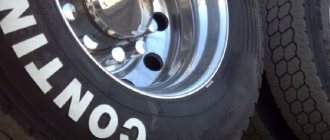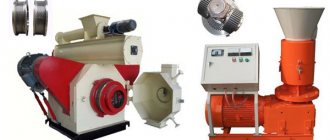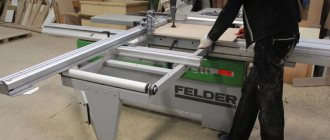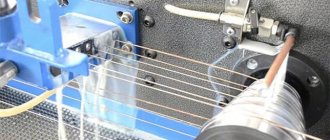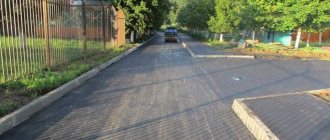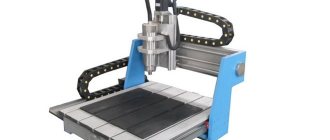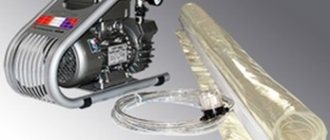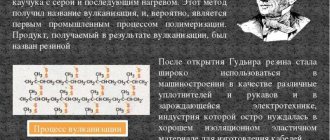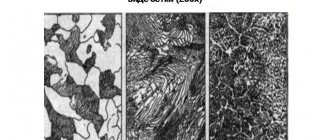Recycling of used tires began already when the number of vehicles in leading countries increased sharply. Along with cars, waste also increases every year, which needs to be identified somewhere. This is why tires are recycled. To do this, you need expensive tire recycling equipment. It is used in special factories and rubber recycling enterprises. This field of activity is developing quite quickly and successfully, since it does not require huge costs for raw materials. In addition, the activities of enterprises solve environmental and economic issues.
As for the equipment itself for the production of crumb rubber at enterprises, the following can be distinguished:
Tire recycling machines
Using this mechanism, used tires are turned into crumb rubber. First, the material is cut into small pieces, after which they are ground into small particles.
Single shaft shredders
When using single-shaft shredders, it is possible to shred tires using a low-speed shaft that alternates between lowering and rising. The tires are first placed in the raw material loading chamber of the shredder. When they are acted upon by a hydraulic press, they are fed to rotating knives. The movements of the press are directed from top to bottom. When the tires are crushed, they are pressed using special sieves located under the shaft.
Single-shaft shredders that shred tires into crumbs are good because they are easy to use, have a simple design, can process thick rubber, and can be used individually and with a production line.
Twin shaft rubber shredders
Twin-shaft machines are used to shred tires into small pieces of 5 by 5 cm. A shredder of this kind is capable of processing both light car tires and tires from large trucks.
The operation of the machine begins with the receiving chamber where the tire enters, which is previously freed from the cord.
The rotation of the machine shafts is carried out in opposite directions. The grinding of raw materials is carried out by hooks located on the rotors. They grab the tire and tear it apart.
The prepared fractions are sent for sifting through a sieve in the form of a rotating drum. Pieces larger than normal size undergo additional crushing again.
When the material is sorted into fractions, the conveyor belt delivers it to packaging. A two-shaft tire recycling machine is ideal for large-sized tires; it does not require sharpening of knife blades after reinstallation or special operating skills.
Tire shredding plant
As a rule, an installation for shredding tires means a rotating crown, the number of knives of which is 25. Tires are clamped with a special chuck and the installation is connected to them. Tires in the clamping drum are most often fixed manually, but it is also possible to use a lifting mechanism for the installation.
The tire recycling plant can operate at three speeds. The choice of speed depends on the tire and its diameter. The rotation speed of the cutting bit can be adjusted by personnel. If you need to grind rubber into very fine crumbs, the speed should be slow; for larger fractions, a higher speed is appropriate. Removing rubber from a tire begins with the outer layer after reaching the cord layers.
If the cord is made of textiles, it can be crushed, but if it is a metal cord, the installation cannot be used for it.
The good thing about a tire shredding machine is that it can replace an entire line for shredding car tires. It is also easy to transport, it can be quickly installed and connected, it can process tires of different sizes, and the payback period is short. One person can operate the installation, as this does not require much effort or special knowledge. Monthly equipment capacity is up to 34 tons of crumb rubber.
Shredders G&Dt Primary shredding of car tires. Fraction 50 mm.
Used car tires are virtually 100% recyclable material. We are considering grinding into rubber chips and crumbs as one of the most cost effective methods. Finished product of large fraction after primary grinding TDF (Tire Derived Fuel) for cement plants; finer fraction resulting from complete processing of the tire as a raw material for the manufacture of coatings and rubber tiles, and for asphalt plants.
Two points that you need to pay attention to when considering the economics of enterprises:
- Seasonality. Crumb rubber has significant seasonal differences in cost. Revenue definitely decreases during the cold period and you need to understand the current costs of maintaining the enterprise and processing raw materials. The advantage is that both raw materials in the form of used tires and finished crumbs are extremely undemanding in terms of storage conditions. And the resulting finished product will be easily sold when the warm season arrives.
- Many sellers of rubber processing lines, in order to attract customers, include additional income from the sale of metal cord and textile fibers into the economy of the tire processing enterprise. But the metal cord obtained as a result of crushing and separation is a type of scrap metal whose cost is extremely low due to the fact that in this form it cannot be melted, and to obtain a good price an additional briquetting line will be needed. Just like the sale of textile fiber from tires, it is absolutely individual in nature. We recommend using pure figures for your calculations based on the difference in the price of finished crumb rubber and the cost of obtaining it.
In this section, we offer a tire recycling solution based on the G&Dt-6 industrial shredder (tyre version for rubber shredding).
This shredder model is supplied as a separate unit for the primary processing of 50 mm tires, or for upgrading existing lines, or as part of a full-cycle tire processing line with a capacity of 1 ton per hour. If higher performance is required, the model range includes higher-performance units G&Dt -8, G&Dt-9, G&Dt-10, G&Dt-12, G&Dt-13 and G&Dt-15.
| SHREDDER SPECIFICATION | |
| Double-Shaft Intelligent Shredder G&Dt - 6 | |
| Modification | twin-shaft |
| Perimeter of the working area of the chopper | 1200*650mm |
| Drive unit | 2*37KW |
| Engines | SIEMENS CHINA (BEIDE) |
| Speed | 8-14rpm |
| Bearings | F.A.G. |
| Knife thickness | 50mm |
| Number of knives: | 2 x 12 pcs. |
| Alloy knives | NiCrMo |
| Shaft alloy | 42CrMo |
| Weight | 9 tons |
| dimensions | 4100 × 3200 × 3060 mm |
| Performance (tire ≤600mm) | 1000 kg/hour |
Of course, for a machine designed for a large volume of processing and continuous operation, the most important indicators are how reliably the design of the shredder is designed and how well it is assembled.
That's why we recommend this 9 ton unit.
The frame of which is made of heat-treated steel. The production of the structure is carried out on modern high-precision four-axis machines with numerical control. All this allows us to obtain high precision processing, full compliance with the technological task, which in turn increases the duration and stability of the industrial shredder, extends the service life of the equipment, reduces maintenance costs and is a guarantee of uninterrupted operation and the planned profit of the enterprise.
Shaft alloy - 42CrMo.
Several heat treatment cycles, ultrasonic diagnostics, preliminary testing of each unit on a test bench for impact resistance and toughness.
Technology for independent disassembly of fixed knives
The counterknives can be disassembled and replaced independently of each other, without disassembling the shredder and shaft. Ease and speed of service.
Siemens motors.
Planetary gearboxes with large torque, precise transmission, high power and long service life.
Additionally and required:
The high quality bearings of the world famous FAG brand feature long service life, dustproof, waterproof, which ensures the continuous and stable operation of the machine. Multiple sealing systems prevent dust, liquid and solids from entering the bearing.
An additional sealing system is provided on all shredder components.
Siemens PLC monitors the operation of the shredder in real time, bearing temperature, motor temperature and electric current, recording and accumulating operation data.
Automatic lubrication system , gearbox lubrication replacement alarm.
The reverse system is automatic. There is also automatic control and stopping when foreign material gets in - when the set permissible reverse time is reached, the machine will give a signal and stop automatically.
RESULT: Ergonomic modern industrial shredder for car tires. Safety, environmental friendliness, high efficiency, low noise level and, as a result, the additional benefit of uninterrupted operation.
Lines
Regarding the comprehensive method of recycling used tires, it uses lines to grind the rubber into crumbs. As a rule, the line has a basic configuration and consists of: a device for removing the bead ring, a guillotine for grinding the tire into a strip, a machine for squeezing out metal cord, rollers for producing crumb rubber, magnetic and air separators, and a vibrating screen.
In tire crumb processing lines, tires are first separated according to weight and diameter. Then they are cleaned of dirt. Then the tires are placed in a vice to separate the bead ring from the rubber. After this, the tires are cut into strips 4 cm wide. Small blanks are formed from the strips, which are turned into crumbs.
The prepared products are cleaned in a separation chamber. The magnetic fields of the installation separate particles of metal cord from crumb rubber. Air cleaning allows for final cleaning of products. After sorting into size fractions is completed, large pieces are sent for re-processing.
The tire processing line can produce half a ton of raw material in one hour. To carry out its work, three workers are involved per shift.
There is no need to undergo training or have special knowledge.
Fuel production line
From a business point of view, becoming a pure fuel producer is profitable and prestigious.
The energy potential of one ton of tires is approximately equal to the potential of a ton of coal. But there is a big problem standing in the way of the successful use of waste tires: the toxicity of combustion products. They contain sulfur dioxide, dioxins and other highly toxic compounds.
Tire to fuel processing line
Burning over an open fire is unacceptable; in the case of a pyrolysis installation, the issue of processing toxic waste remains. The installation will have to install expensive treatment facilities. With them, the process can become profitable provided that at least 110 tons of raw materials are processed per day. Investments will pay off rather slowly. Most of these installations were built with government support or with government participation.
There is another technological process. In plants of this type, tires are processed into fuel. The complex requires about 20 m2 for installation, its height is 10 m. Metal rims are removed from former tires, crushed into crumbs and loaded into a chemical reactor using a conveyor. It maintains an operating temperature of 460 °C. Under such conditions, rubber breaks down into liquid hydrocarbons, pyrolysis gas, solid soot deposits and metal scraps. This gas is used to maintain the temperature in the reactor; its excess, in small quantities, is released into the atmosphere after passing through the purification system.
Liquid fractions are poured into containers through a dosing system and taken to a warehouse. Soot waste (carbon black) is cooled, quenched and metal is separated on magnetic separators. Metal, carbon and waste are also packaged and sent for sale and disposal.
Such a system processes up to five tons of tires into fuel per day. This gives:
- liquid fuel fractions - up to 2 tons;
- metal waste - up to 0.5 tons;
- solid carbon-containing residues - up to 1.5 tons;
- gas - up to 1 ton.
The tire recycling line is installed outdoors under a canopy and requires a level area with a hard surface. Production maintains a continuous work cycle and requires two operators per shift to operate. Electric power - up to 15 kW. Air and industrial wastewater purification systems will also be required.
Factories
Mini-factories are being created to process tires in large volumes. The main advantage of a mini-factory is that little energy is spent on it, which determines the cost of the finished product. The enterprises are very compact, but at the same time they are equipped with all the necessary equipment for shredding tires. In addition, the quality of products at the factories reaches a high level, production is set up in one cycle, the enterprise and products are completely environmentally friendly.
The plant always has equipment consisting of: a tire crusher, a double-sided bead ring puller, knives for cutting rubber, a conveyor belt, an impact crusher, a magnetic separator and a vibrating sieve.
At the factory, first of all, the rubber undergoes a visual inspection to find out whether it contains impurities that threaten equipment failure.
If the raw material is large enough, it is crushed using hand tools. Small tires can fit entirely in the loading chamber.
Tires
Shredded with a shredder into small pieces. After this, they are cleaned of metal particles.
To grind the rubber to the required size, it is placed in a special compartment in which it is crushed with a rotating knife. Then parts of the metal cord are removed. The final cleaning of the crushed rubber takes place in the separation compartment. The last stage is sifting the particles through a vibrating sieve to sort them into fractions.
At a mini-plant for processing tires into three fractions, the volume of production can reach up to 350 kg per hour. Three to four people are involved to carry out the work.
There is an opportunity to choose equipment for both beginners and those experienced in the field of tire processing.
Equipment for processing tires into crumbs
This group of equipment is designed for grinding raw materials into crumbs and dividing them into fractions with subsequent shipment for further processing.
Vibrating screen for sorting
A typical set of equipment for tire recycling includes:
- Group of shredders (shredder, hydraulic shears, tape cutter).
- Waste separators (magnetic and vortex).
- Conveyors for moving raw materials.
- Vibrating sieves for sorting.
- Equipment for packaging and loading of products.
- Low-power pyrolysis plant for burning textile waste.
The price of such a turnkey line starts at 10-15 million rubles. However, it is not necessary to purchase all equipment from one brand. Using locally produced machines and devices with similar technical characteristics (or simply those already available) you can save significantly.
Before purchasing, be sure to visit a similar operating enterprise and find out from them the problems and bottlenecks when using this or that equipment.
The most important component of the production line will be the shredders. Their smooth and uninterrupted operation largely determines the production and financial success of the enterprise.
Tire recycling begins with a shredder, which cuts tires into fragments no larger than 15-20 cm in size. It bears the maximum load, so it would be wise to take care of a good service contract and a supply of spare parts.
Tire Shredder
If the planned output exceeds a ton of tires per hour, it is better to choose a multi-roll plant made in Europe. Its high-quality work will facilitate the functioning of equipment located further in the technological chain.
Rotary knife crushers and cam extruders are used as secondary crushers. Extruders are inexpensive to purchase, but come with high operating costs for electricity and replacement of failed cams.
Conveyors, separators and vibrating sieves are simple in design and do not have such highly loaded and critical parts. Many local manufacturers produce such tire recycling equipment at affordable prices, while maintaining high quality products.
Equipment from a Russian manufacturer
To process tires into crumb rubber, you can choose domestic equipment. For example, the two-block line RDK-500, developed by a Novosibirsk company. Its price is about 3,000,000 rubles. The processing plan is half a ton per hour.
- In the first block of equipment, the metal reinforcement is separated from the tires and they are cut into large pieces. The first block consists of: a machine for removing bead rings, a mechanism for cutting the tire web, equipment for grinding at the first stage, a metal cord extractor, air and magnetic separators.
- In the second block, the tire parts are crushed to fine crumbs, having previously been freed from textile elements and metal parts. The volume of recycled rubber reaches 300 kg, textile residues 130 kg, metal 70.
The ALPHA-SPK company from Novokuznetsk offers equipment with quite high power. The ALFA-TIRE RECYCLING line consists of complexes that can process from 250 to 1000 kg of raw materials per hour. The kit includes a dust removal and protection system. Together with installation, settings and launch, the price of the ATR line, depending on the power, the price fluctuates around 6,000,000 - 9,000,000 rubles.
Another option is equipment from EcoStep, a company from Togliatti that offers its own franchise. The equipment includes three lines: a basic line for cutting tires into rubber chips, an automatic line for grinding parts into crumbs with a capacity of 500 kg per hour, or a flavored line with a capacity of 700 kg per hour.
The cost of the franchise is RUB 950,0000. With minimal equipment. The main advantage of this company is that it itself is engaged in installation, startup and training of workers. In addition, there is warranty service.
